-
Posts
412 -
Joined
-
Last visited
Content Type
Profiles
Forums
Resource Library
Events
Gallery
Blogs
Store
Community Map
Posts posted by hexagon789
-
-
Dutch Vans (steam heat) - boilers: Two Spanner of 1000lb/hrs. Generator - Lister HR3 of 32.25hp at 1500rpm
Dutch Van (electric heat) - one Cummins NTA 885-G3 of 535hp at 1800rpm powering one Dale EM/395/DCE Alternator of 283.5kW at 1500rpm
BR Van - boiler: One Spanner of 2000 lb/hr. Generator: Lister HR3 of 32.25hp at 1500rpm
Mk2D EGV - Engines: Two Detroit 8V-71N of 234hp at 1575rpm powering Two International Electric alternators of 160kW
Mk3 EGV -
As built - Engines: Two Detroit 8V-71N of 234hp at 1575rpm powering Two Newton Derby Alternators of 168kW
As modified Engines: - Two Cummins LTA 10G3 of 295hp powering Two Newton Stamford HD4D Alternators of 202kW at 1500rpm.
Details from 2004.
For reference - a Mk3 coach requires 30kW of power, a Mk3 diner requires 70kW.
Hopefully this helps in some way.
-
 2
2
-
 2
2
-
 1
1
-
 4
4
-
-
14 minutes ago, amdaley said:
Surely there are safeguards in place to prevent such head on collision ?
While the new build and upgraded sections are equipped for ETCS cab signalling, much of the old parts of the line still in use have the signalling either broken or disabled and thus are worked on telephone and train orders.
57 minutes ago, Ironroad said:Since this was a head on crash on a double track line one of these trains was on the wrong line. I believe trains in Greece travel on the right and from the pictures it looks like the passenger train was on the left. How that happened is the question, it is an incredible error in this day and age. I also wonder what the protocol is when a driver realises they are on the wrong track as surely must have been the case.
Almost all double track in Greece is equipped for Bi-directional running.
-
 1
1
-
 2
2
-
-
-
13 minutes ago, jhb171achill said:
Top ones are Inverness. Class 24 diesel.
The fact that it's in the 'south' side platforms and has a Class 1 'Express' headcode in the headcode box, suggests a Glasgow or Edinburgh service.
Aberdeen trains were Class 120s DMU from 1959-80, so I'm ruling that out.
The mix of Blue/Grey & Maroon Mk1s suggests late-60s/very early 1970s.
Bottom two are Stranraer Harbour with a Class 126 DMU, these were repainted from Green first to all-blue then to Blue/Grey as here.
The 126s only received Blue/Grey from 1977 and the Class was mostly withdrawn in 1982, a couple of sets surviving until January 1983.
The Stranraer services became loco-hauled in 1981/2.
So bottom photos are 1977-81; likely more in the middle of that range.
5 minutes ago, jhb171achill said:Class 52 'Western' (2,700bhp 90mph Diesel-hydraulic), no idea of location or year though but they were all based on the Western Region!

-
 1
1
-
 1
1
-
-
1 hour ago, Broithe said:
After a while, all these exotic beach holiday destinations just blur into one...
The clock in Skeg is a good way from the station, and offline from it, too.
Apologies, I thought the clock was at the station at Skegness.
And in my defence I've never seen Cleethorpes!
13 hours ago, Broithe said:I think the station might be Cleethorpes.
Yes, my error there
-
 2
2
-
-
12 minutes ago, jhb171achill said:
SUPERB info, Hexagon; this is exactly why I'm posting this stuff here!
You're very welcome. What I lack in historical knowledge of Irish railways, I hope I make up for in more modern age GB railways!
(I think my modern era Irish railway knowledge isn't bad though!
 )
)
-
 1
1
-
-
On 20/10/2022 at 8:10 PM, jhb171achill said:
The loco is a Class 31. A1A-A1Am Originally Mirlees engines of 1,200 or 1,365hp; these were unreliable so they were re-engined '65-'69 with English Electric of 1,470hp, essentially downrated versions of the engines installed in Class 37s. Top speed was 80 or 90mph depending on subclass. Nicknamed Toffee Apples or Goyles.
Very common in Anglia, Lincolnshire and out that way.
The DMUs are Class 108, same drivetrain as the 108s, but built by Derby rather than Met-Camm
The station is Skegness, the clock is the giveaway.
1 hour ago, jhb171achill said:Tonight's visit to Brexitstan
Class 24. 1,160hp, 75mph - basically the British equivalent of a 181 Class!
 1 hour ago, jhb171achill said:
1 hour ago, jhb171achill said:A visit there in 1969 or 70 for me was the first time I had been out of Ireland, and what I now believe were 101 class railcars were on many local trains, some in green, some blue & grey.
Very likely, the 101s were pretty ubiquitous in many parts of the BR network. The last five units survived until 23rd December 2003 - about 47 years.
1 hour ago, jhb171achill said:Main line trains often had 47s, and possibly "Peaks"? About half of them green, the rest blue & yellow
47s, given there were 512 built, were common everywhere, probably even more so than the 101s. A handful still run on the mainline, mostly on charters and railtours but some do stock transfer workings and similar.
'Peaks' actually refers to three classes 44, 45, 46 - the name is because the earliest batches of 44s were named after mountains, such as Scafell Peak etc.
There were only ten 44s, and while initially appearing on the West Coast, they were soon allocated to Toton and used mostly on freight as they were less powerful than the 45s and 46s at 2,300hp vs 2,500hp.
The 45s are synonymous with the Midland Main Line between London St Pancras and Leicester, Sheffield, Nottingham. In earlier years they also operated the through services to Glasgow via Leeds and the Settle-Carlisle, these ended in 1974. From the early 80s, they began appearing on Transpennine services between Liverpool and Newcastle.
The 46s were seen mostly on the North-East (Newcastle/Leeds/Sheffield) to South-West (Devon & Cornwall) Cross-Country services, and in earlier years some North-East to London services.
The main difference between 45s and 46s is the electrical equipment manufacturer.
1 hour ago, jhb171achill said:Carriage stock was all Mk 1s as far as I recall - can't swaer to there being no Mk 2s, but I don't recall seeing any
The first Mk2s appeared in 1964, but until air-braked ones appeared from 1967, they were mostly used in the best trains but mixed indiscriminately with Mk1s.
The air-braked variants were made into dedicated sets, where only the catering and full brake guard's vans were Mk1s (suitably converted to air-braking).
On secondary lines (not mainlines but proper cross-country or rural lines), Mk1s were the norm until the early/mid-80s.
1 hour ago, jhb171achill said:The Vale of Rheidol was the long-running joke, that BR didn't finish with steam in 1968!
A tourist line though, not a normal line run as a fully integrated part of British Rail. The GWR had operated it before them, and the Cambrian before them.
It was split from BR and privatised in 1989.
10 minutes ago, jhb171achill said:Princes Street Gardens, just west of Edinburgh Waverley, looking east towards Waverley.
The loco is a Class 27, synonymous with Scottish railways in the 1960s and 1970s, there will be another 27 on the back.
This is one of the Edinburgh-Glasgow High-Speed shuttles, which ran the fast services from 1972-79.
Two 27s, one each end of six Mk2Z coaches which were refitted with air disc brakes, worked push-pull.
Top speed was 90mph and they operated a half-hourly service taking 43-45 mins for the 47.25 miles with one or two stops.
They replaced sets of six-car DMUs built in 1956, which had a top speed of only 70mph.
The accelerated service was introduced as a direct result of road competition, the M8 motorway had not long opened between the Edinburgh and Glasgow and coach operators had obtained a 70mph licence to run an express coach service.
The 27s in turn were exhausted by the intensive high-speed running, reliability nose-dived and the schedules were eased by 2 mins in 1977 and a further 2 in 1978.
They were replaced in 1979-80 by sets of push-pull modified Class 47s, coded 47/7 running sets of five Mk3 coaches with a converted Mk2F brakes as driving trailers.
-
 3
3
-
 1
1
-
 1
1
-
-
34 minutes ago, jhb171achill said:
I think that between the two carriages, this thing had at least two, and possibly three wheels......and a stop and go button in the driver's cab.
Class 143 Pacer, they have the same controls as the 15x series Sprinters:
7-notch power controller
Westcode 3-step EP brake
Often derided as "nodding donkeys" due to the motion caused by the fixed four-wheel chassis when travelling at speed. Last of these was withdrawn in May 2021.
Each vehicle has 2 axles/4 wheels, the design was based on British Rails High-Speed Freight Vehicle and was tested to 140mph!
The livery is the original BR Provincial, later Regional Railways, livery.
36 minutes ago, jhb171achill said:Now an orange and black one. Must be at Leixlip (Druggie).
Strathclyde Public Transport Executive Strathclyde Red and Black.
Class 314 25kV ac EMU, 880hp/75mph. They entered service in 1979, last unit withdrawn December 2019.
Looks like Newton (Lanarkshire) station in the photo.
-
 1
1
-
-
8 minutes ago, airfixfan said:
Details are in Rail he paid 32£ instead of a fare of over 300£
He wanted an Amytime Open Return, the most expensive option. Outward portion is valid for 5 days at any time of day, the return is valid for up to one month with unlimited break of journey opportunities.
If he'd even been prepared to limit to off-peak, it would've been £124 for a return.
Also the £33 covers him getting to Barrow, there is no mention of cost nor journey details coming back...
-
11 minutes ago, airfixfan said:
Reading in latest Rail Magazine about a man who wanted to travel from London to Barrow. Found it cheaper to fly London to Dublin then Dublin to Manchester and save about 300 £ as well!
Given a walk-up is £87, I wonder how that works?
-
20 minutes ago, Ironroad said:
It's not just the interconnectivity of rail services that is ignored. Busaras in Dublin is over sixty years in existence and is sited across the street from Connolly Station, yet in all that time the concept of providing a simple elevated pedestrian walkway linking both terminals does not seem to have occurred to anyone.
Not just in Ireland; asides from similar examples here in Scotland, I can think of a few similar instances in France, in Spain and even in the usually decently integrated Netherlands, where I found buses and trains seemed to treat each other as a disease to be avoided and hidden from each other at all costs!
Local planning is something so many places just don't seem to consider properly, if indeed at all.
Pity.
-
Just now, Broithe said:
On the Big Island, there are huge anomalies in the prices of tickets and it's often cheaper to book a single journey as a number of stages. A friend of mine has turned this into an art-form.
This is his greatest triumph - Stafford to Portsmouth return, with 36 pieces of cardboard to achieve the lowest total fare.
Only one change of train, and the same booked seat on each of the two trains.
'They' do spend a bit of time trying to undo the way round the higher prices - it used to be cheaper to buy a ticket to the next station past Gatwick Airport stop, and just get off there instead, one stop early. So many people did this that they made it an offence to do so...
It is offence to stop short on advance tickets, nothing against it on walk-up tickets as break-of-journey is allowed with those.
Going further though... that's another matter.
Most split-ticket anomalies have been removed in Scotland a few years ago, but in England & Wales there are quite a few still about.
There are a couple of good websites that will figure out the splits for you.
-
 1
1
-
-
12 minutes ago, Broithe said:
It would have been about the same price, I think...
Probably
-
 1
1
-
-
1 hour ago, Broithe said:
His ticket was just Stafford to Milton Keynes, no boat involved.
Apologies, I thought you meant he was doing Ballybrophy to MK!
-
 1
1
-
-
Just now, Broithe said:
I was once booking my ticket and a chap at the next window was booking a ticket to Milton Keynes and he was charged more, despite Holyhead alone being further than MK was from Stafford.
Each station in GB is charged on the basis of which zone in fits in rather than precise distance or route for the purpose of SailRail.
Stafford is in Zone B, while Milton Keynes (as is London) is in Zone E.
The higher the letter, the higher the fare.
Zone B is £42/£47.50 to/from Dublin, £66.40/£71.60 to/from anywhere else in Ireland.
Zone E is £46.10/£51.90 and £70.50/£76.80 respectively.
The lower figure is Advance booked, the higher figure is the walk-up fare.
The highest possible fare is £80.90, a walk-up Great Britain Zone E to 'Not Dublin' via Irish Ferries Swift SeaCat (which charges a slight premium over the Ulysses sailings).
And now I've spent more than enough time in the quagmire of the GB Fares Database, so I bid you all a good night!

-
 1
1
-
-
16 minutes ago, jhb171achill said:
That's actually pretty reasonable!
Surprisingly!
-
 1
1
-
-
7 hours ago, Broithe said:
As far as I know, you can still get such a ticket.
You can still get SailRail tickets from any GB stations to any station in Ireland routed via the ferries from Holyhead
They are £51.10 in the UK or €60 in Ireland for London/Dublin for example.
Further destinations are slightly more expensive, but a ~£5/€5 discount can be had by booking them in advance.
Stafford-Ballybrophy comes to £66.40/£71.60 presently.
-
 2
2
-
-
1 hour ago, jhb171achill said:
Top photo is a 4CEP (4 Coaches, Corridor, Electro-Pneumatic brakes - TOPS Class 411) Southern Region 3rd Rail EMU. 90mph; 1,000hp; based on the BR Mk1 coach design. These lasted from 1956-2005. Not sure of location.
Other photo is a Class 319 at Gatwick Airport, these are 4-car dual-voltage EMUs introduced in 1987 for the Thameslink Bedford-Brighton cross-London project. 100mph; 990kW/1,328hp; based on the Mk3 design.
Some remain in service with Northern and WMR, others have been converted to 769s for Northern, TfW and GWR by adding diesel engines to the driving trailers.
The livery in both cases is Network SouthEast, essentially the London & South East commuter area, introduced as a separate business sector of British Rail in 1982 as London & South Eastern and relaunched as NSE by new manager Chris Green in 1986 with a new livery (he had just transferred from ScotRail and had already made several improvements with branding and services etc).
Some 4CEPs retained NSE until the 2000s, but the last 319s in this colours were repainted in 1994.
So it's between 1987 and 1994 for the second photo at least.
-
 1
1
-
-
25 minutes ago, jhb171achill said:
Between 1979 and 1988.
It's an ex-Class 24, no. 24061. She was taken over by the Railway Technical Centre in 1975 and renumbered as per your photo in 1979, withdrawn 1988.
Hence it must be between 1979 and 1988.
As for location, I'd guess the RTC at Derby, given it was based there and another Test Vehicle - 'Laboratory 1' - is also in shot.
Edit: in fact, it is definitely the RTC at Derby, I've just looked at a photo and the main building is 100% that one.
-
 2
2
-
 1
1
-
-
10 hours ago, jhb171achill said:
For completeness, the DMU parked in the platform is a Swindon-built InterCity unit of Class 126.
The unusual feature of these units was that there were two styles of driving motor - one as per your photo with a full-width cab but also a design with a half-cab and gangway, allowing a walk-through six-car formation to be made up.
They entered service from August 1959 and the final two units in traffic lasted until January 1983. One unit is preserved in working order at Bo'ness near Linlithgow.
-
 1
1
-
-
On 6/10/2022 at 4:13 PM, LARNE CABIN said:
Page 67, Jonathan Allen's 35 Years of NIR, 101 entering Waterside Station on 9th August 1983. Mark 2Bs in blue/light grey livery as per IRM models eagerly awaited.
Jonathan Allen has an excellent flickr account, including several photos of Hunslets on all sorts of workings: https://www.flickr.com/people/152343870@N07/
-
 4
4
-
-
32 minutes ago, Mayner said:
I think the Class 66 EMD Model JT42CUR introduced 1998 have a later (more reliable) version of the EMD 710 engine and more significantly are heavier with 'self steering bogies' https://writebetter.io/examples/radial+self-steering+bogies/ .
Self Steering Bogies were introduced during the mid late 1990s on American high horsepower freight locos such as the EMD SD70Mac and EG Dash 9-44CW to reduce wear and adhesion on curves a single SD70 or Dash 9-44 was expected to do the work of 1-2 earlier 6 axle locos such as SD40-2.
The 201s are EMD Model JT42 HCW JT---Twin cab 42---EMD loco type H--head end power C- 6 axle version W Standard to 5'6" gauge
The CUR suffix on the Class 66 JT42CUR likely to be C-6 axle version U meter to 5'6" gauge bogies R---Radial bogie?
Good point, maybe more a passenger GB Class 59 then?
14 minutes ago, spudfan said:I think the issue was the way Irish Rail were using the HEP facility. I think a revised schedule sorted that out.
It's probably just as well the original plan to get rid of generator vans on Mk2D and Mk3 sets was shelved!
-
 1
1
-
-
On 4/3/2022 at 2:17 PM, jhb171achill said:
The GSR had four of these, entering traffic in 1926 in Pullman brown and cream, which was probably the inspiration for the brown & cream colour scheme applied to many main line carriages between approximately 1927/8 and the late 1930s. Later, of course, they would be maroon, and CIE green in their final days. They were fully seated in later years with the snack bar removed.
For modellers attempting a conversion, note the matchboard plank lower panelling, unlike British ones, and window spacing different from British ones.
I've only just seen this @jhb171achill many thanks for posting it - ive never seen an interior plan of the Irish Pullman cars so it's most interesting to see the layout. The 3-seat benches with extending tables at the seating saloon area ends are an interesting way to accommodate the offset doorways. I don't believe any British cars had such an arrangement that I'm aware of.
The photo showing the interior seating, and decor is likewise fascinating - they may have been third class but they are not exactly spartan.
-
 1
1
-
 1
1
-
-
I understand the designs are identical except:
The IÉ 201 had HEP equipment fitted, passenger gearing (165km/h vs 120km/h) and a different cab design.
The engines, generator, traction motors are all the same and I suspect much of the other mechanical equipment is too.
-
 2
2
-
.png.c363cdf5c3fb7955cd92a55eb6dbbae0.png)

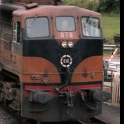
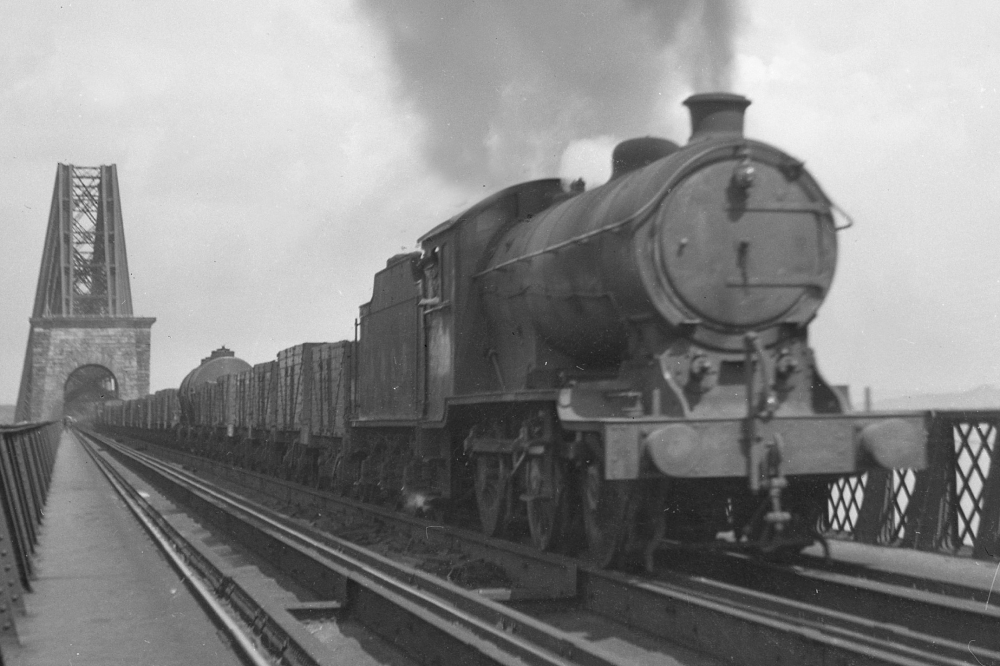
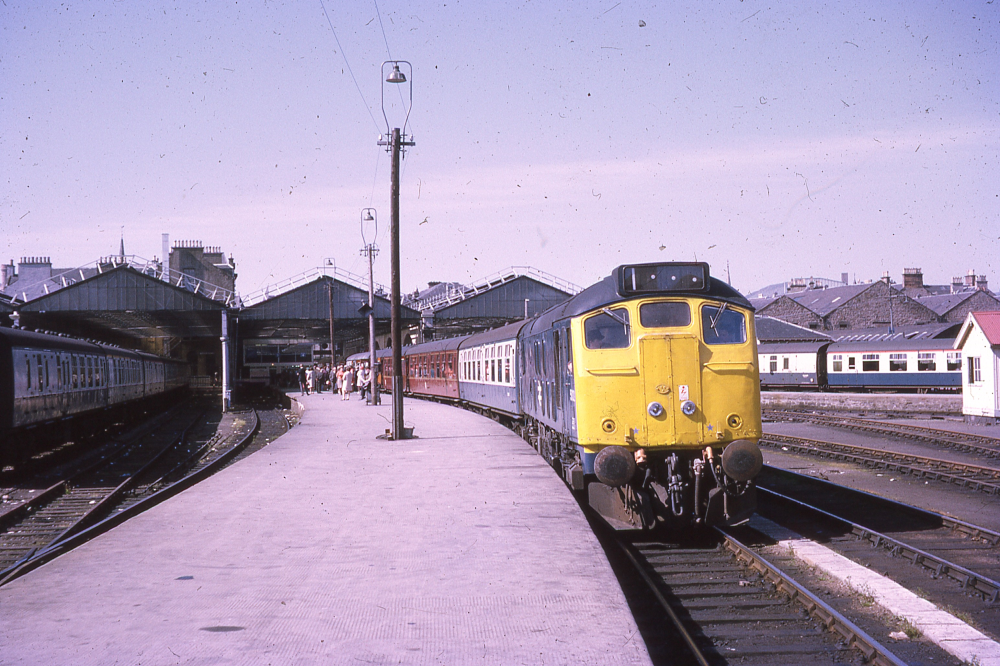
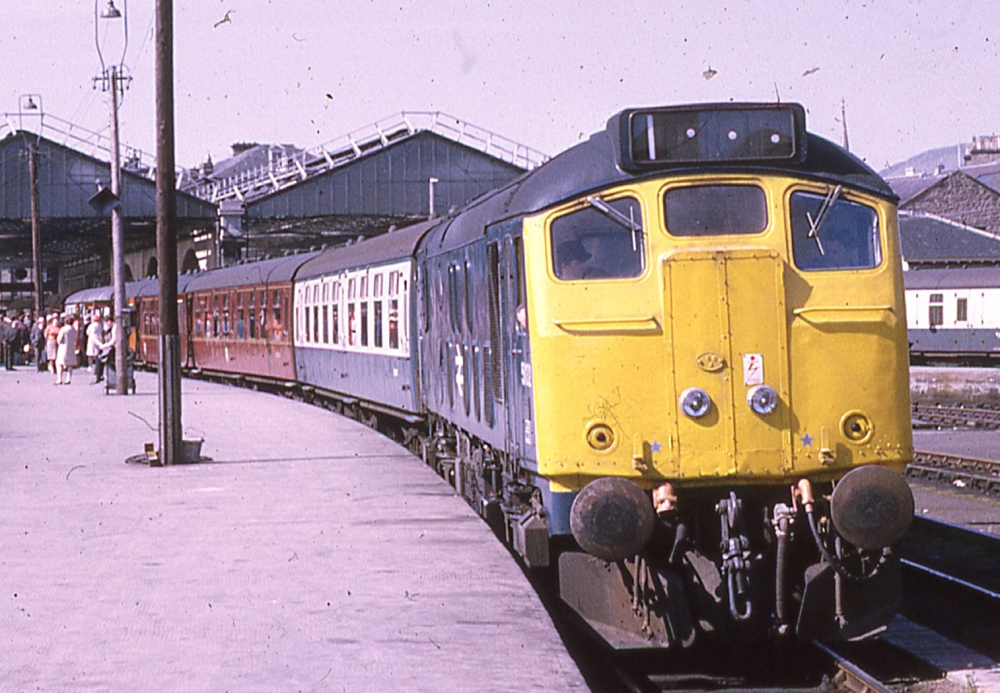
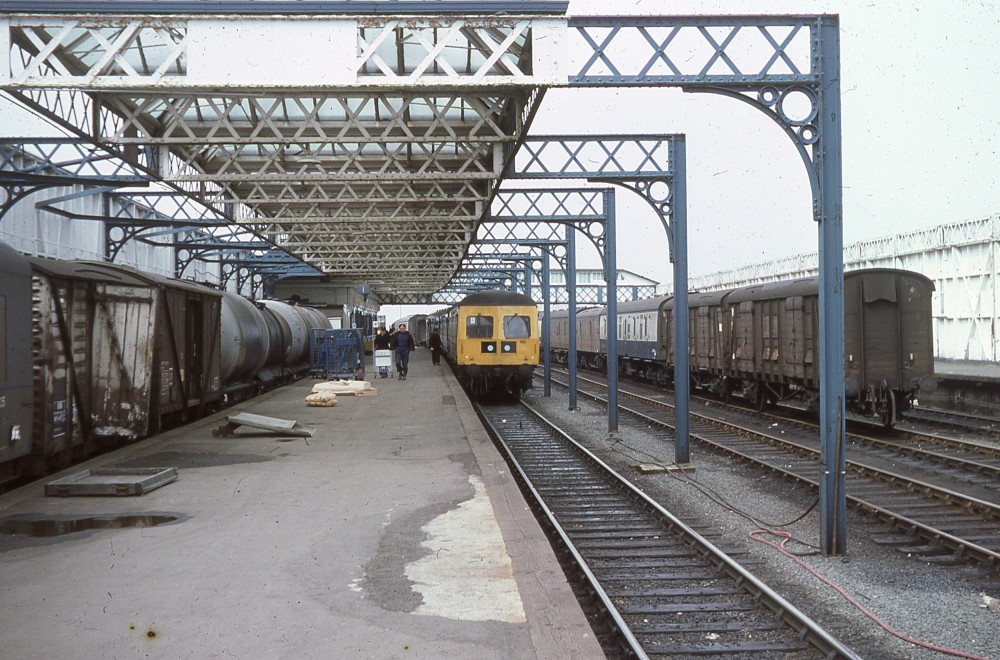

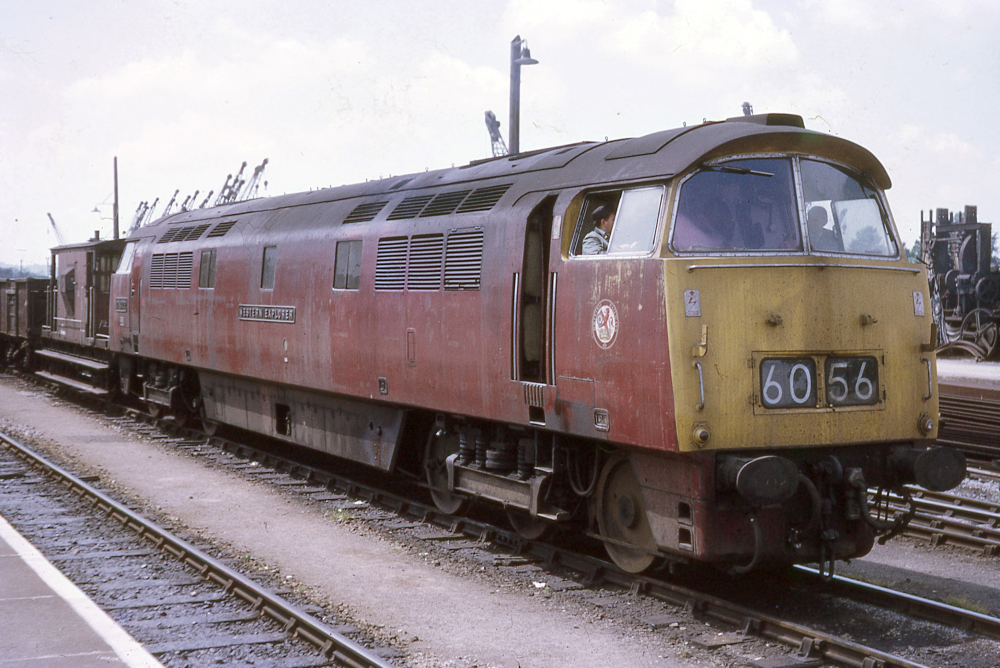
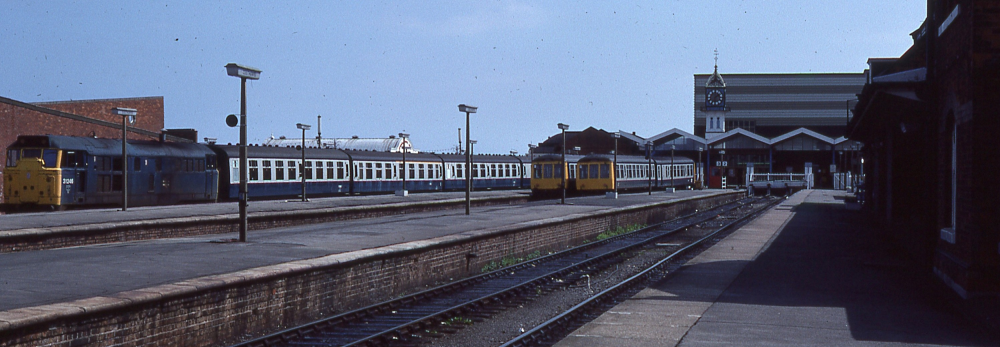
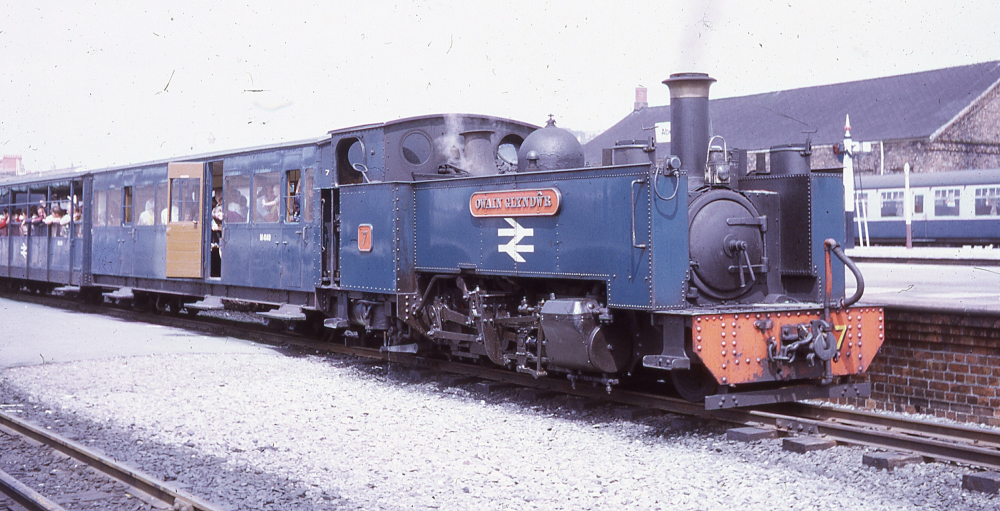


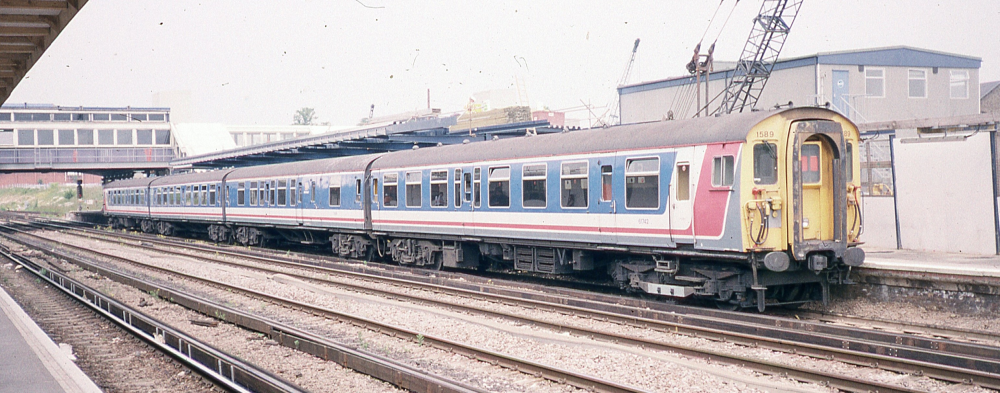
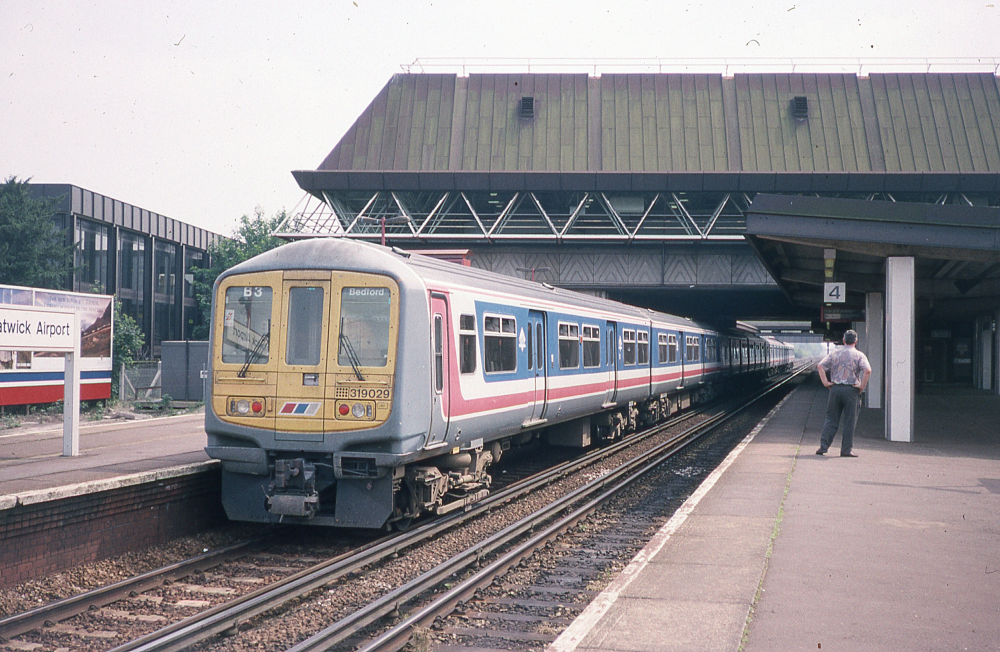
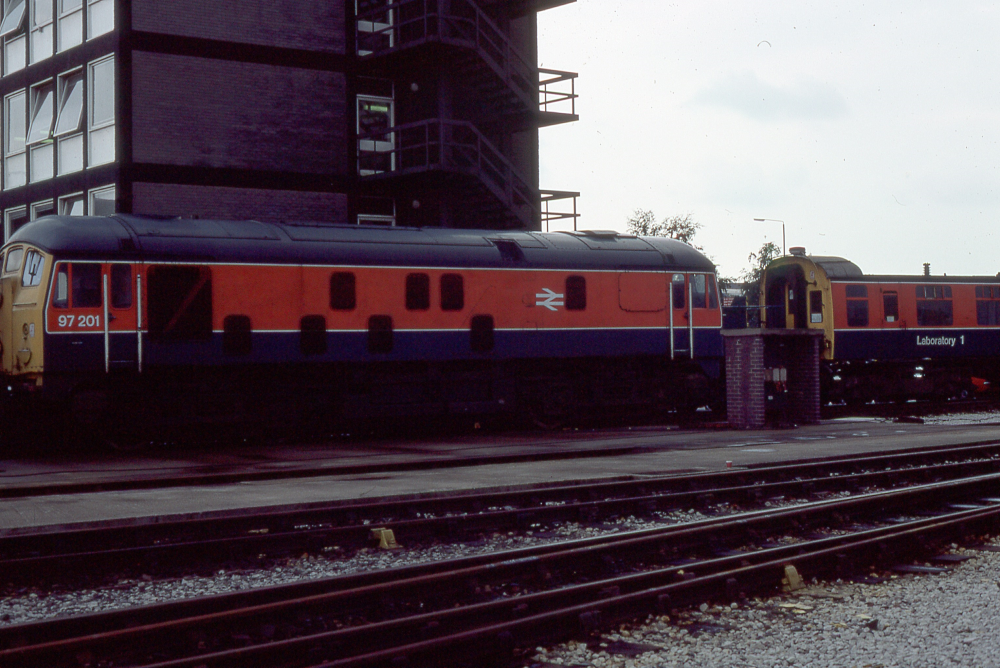
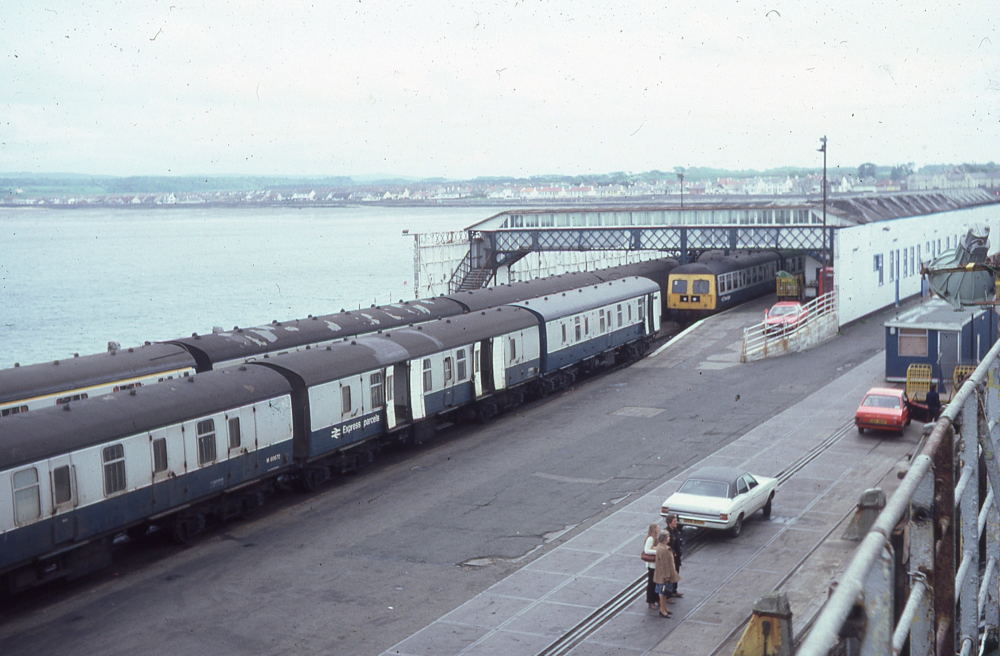

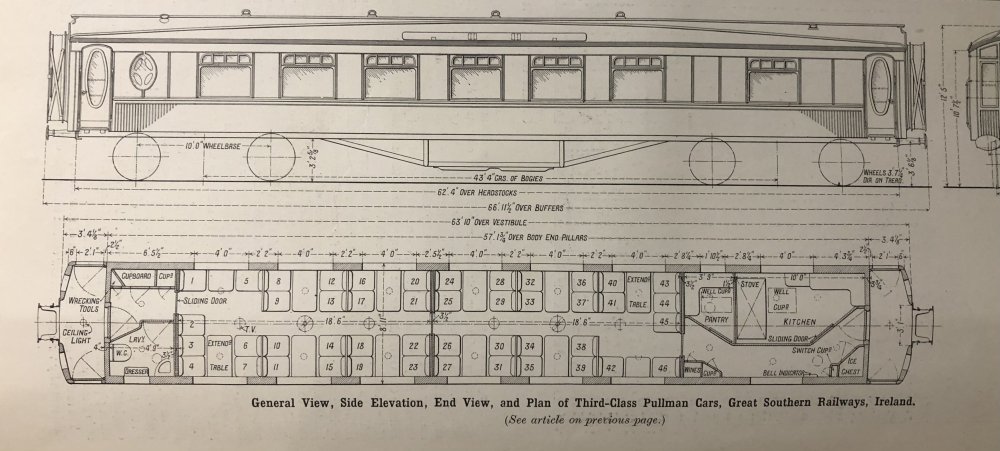
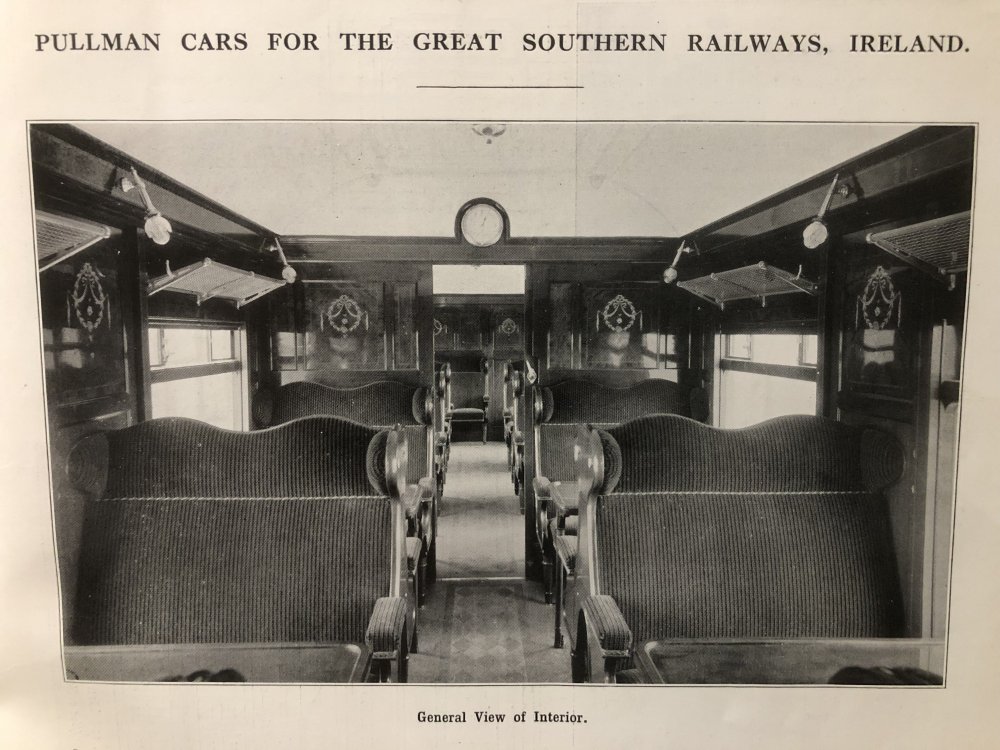
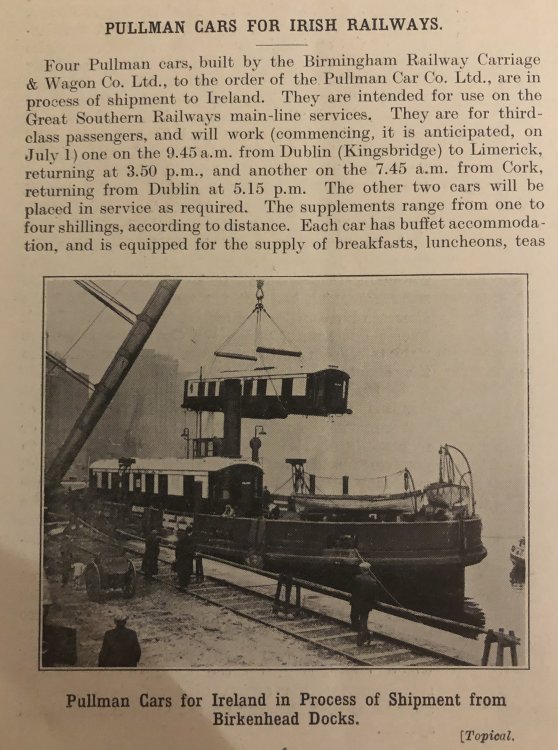
Foolish drivers
in Letting off Steam
Posted · Edited by hexagon789
If you were familiar with the layout at Cook Street, you could understand how easily it could happen in spite of all the warning signs and 'low bridge' warning system in place on the buses themselves.